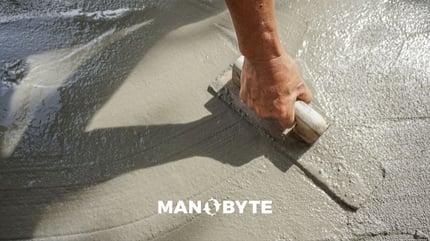Innovative Building Materials: Self-Healing Products: Concrete
Jillian Lambert

Are you up-to-date on the new product technology that is laying major ground work in the building materials industry? They are an emerging class of smart materials, capable of self repair and have a big future in the construction world. Let's take a look...
The construction industry has been rather conservative in its adoption of technology. The visionaries have been the architects and engineers, designers etc… and the builders have more so adapted to focus on the task at hand. However, by adopting alternative manufacturing methods that speak not only to the needs and desires of a more informed and oftentimes contentious customer base, but also an ever increasing ecologically aligned perspective, manufacturers are discovering advantages like greater creativity, flexibility in design, less waste, a minimized carbon footprint, and more robust and aesthetically pleasing structures.
Self-healing materials have for some time garnered the attention of many researchers over the recent decades in the hopes of providing quality material properties, longevity and resilience. Self-healing building materials have immense capabilities of extending the service life of materials, this in turn has been regarded as an important aspect when it comes to designing sustainable structures.
There are multiple self-healing products that range from cement based composites, geomaterials, bitumen and asphalt concrete, structural steel, soil and soil cements, glass for structural applications, as well as structural ceramics. As the topic of innovative and alternative building materials is immensely intriguing, I want to dedicate more time to investigating the products and sharing my findings with our audience to further increase their awareness of how technology is rapidly changing the building materials industry.
Concrete is widely used in the construction world because it’s durable, practical, has a high thermal mass, and for the most part is low-maintenance. However, it’s limitations are evident in the manufacturing process (during the mixing and pouring phase) or on site, as cracks may develop. That’s where technology steps in with a solution that literally “fills in the gaps.” This new self-healing concrete utilizes bacteria to fill the forming cracks with limestone whenever water comes in contact with it. Check out the video here.
According to Grandview Research’s industry analysis, “the global self-healing concrete market size was valued at USD 24.60 billion in 2019 and is expected to expand at a compound annual growth rate (CAGR) of 37.0% from 2020 to 2027.” This is definitely worth making note of, especially for those considering expanding their product offerings. Also worth mentioning, are the major manufacturers to date within the self-healing concrete industry:
- Basilisk
- PENETRON
- Kryton
- Xypex Chemical Corporation
- Sika AG
- BASF SE
- Hycrete, Inc.
- Cemex
- Oscrete
- GCP Applied Technologies
- RPM International
The construction market’s demand for less maintenance, an enhancement of the lifespan of buildings and structures along with the consumer desire for more sustainable offerings will continue to drive a high growth rate for self-healing building materials. And as a manufacturer, if you’re considering the possibility of expanding your product line, it’s advisable to consistently increase your knowledge, remain flexible and open as technology will continue to enhance and create new opportunities for growth.
If you’d like to learn how to develop a viable strategy for growth that will help you to weather whatever changes lie ahead, let’s schedule a time to talk.
An investment in knowledge always pays the best interest. - Ben Franklin


